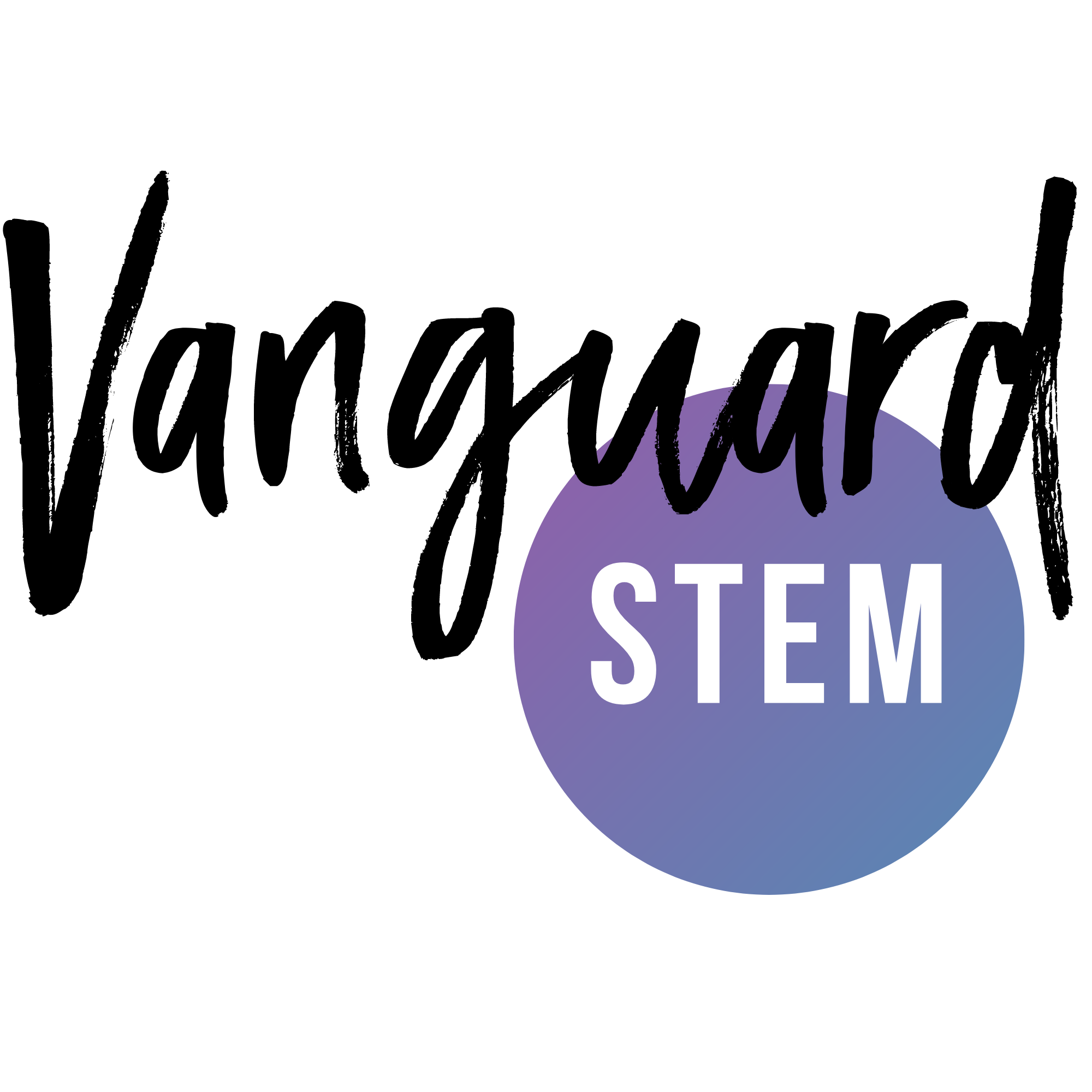Lorenna Garcia-Bochas is determined to break the glass ceiling and prove all the statistics wrong.
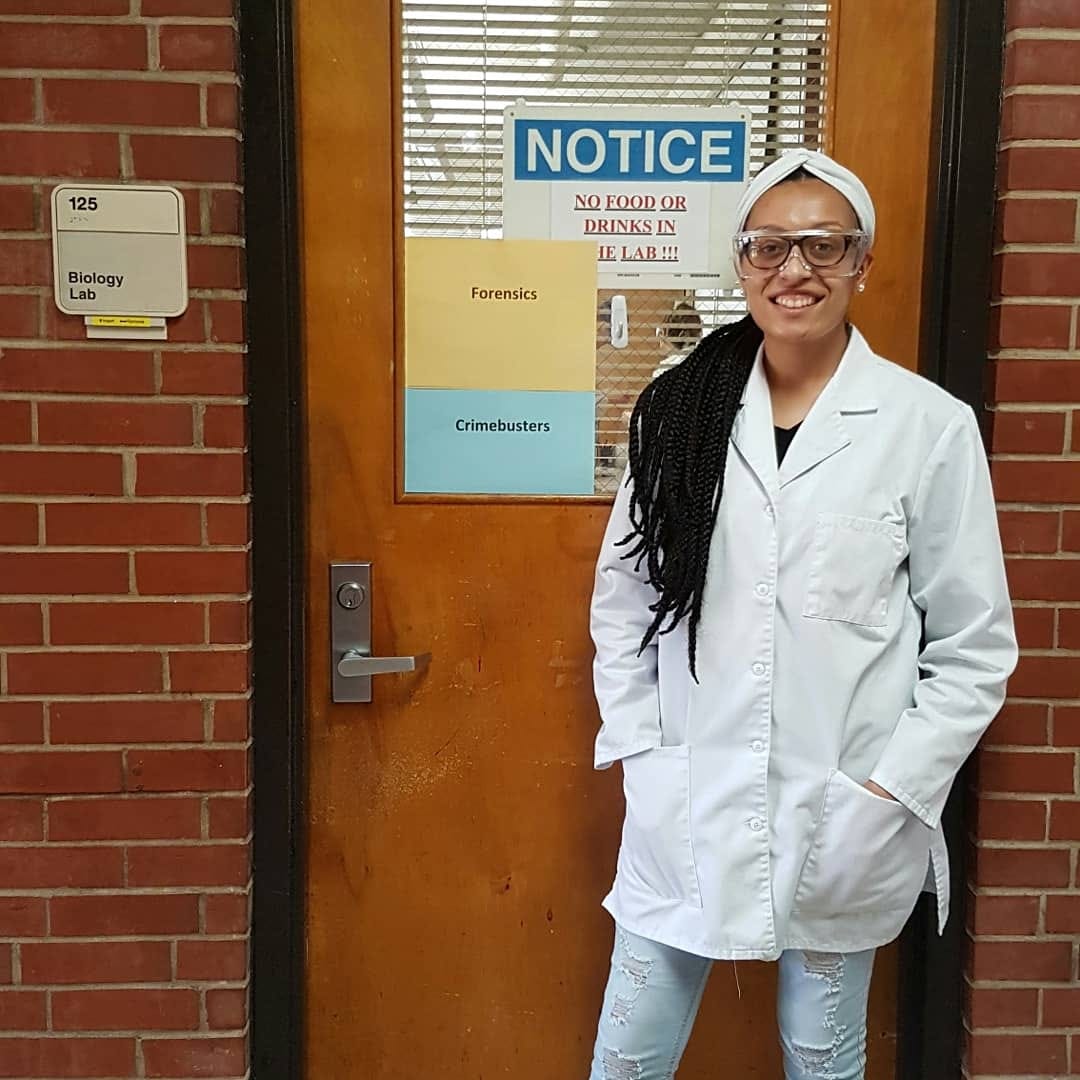
Responses may be edited for clarity and brevity.
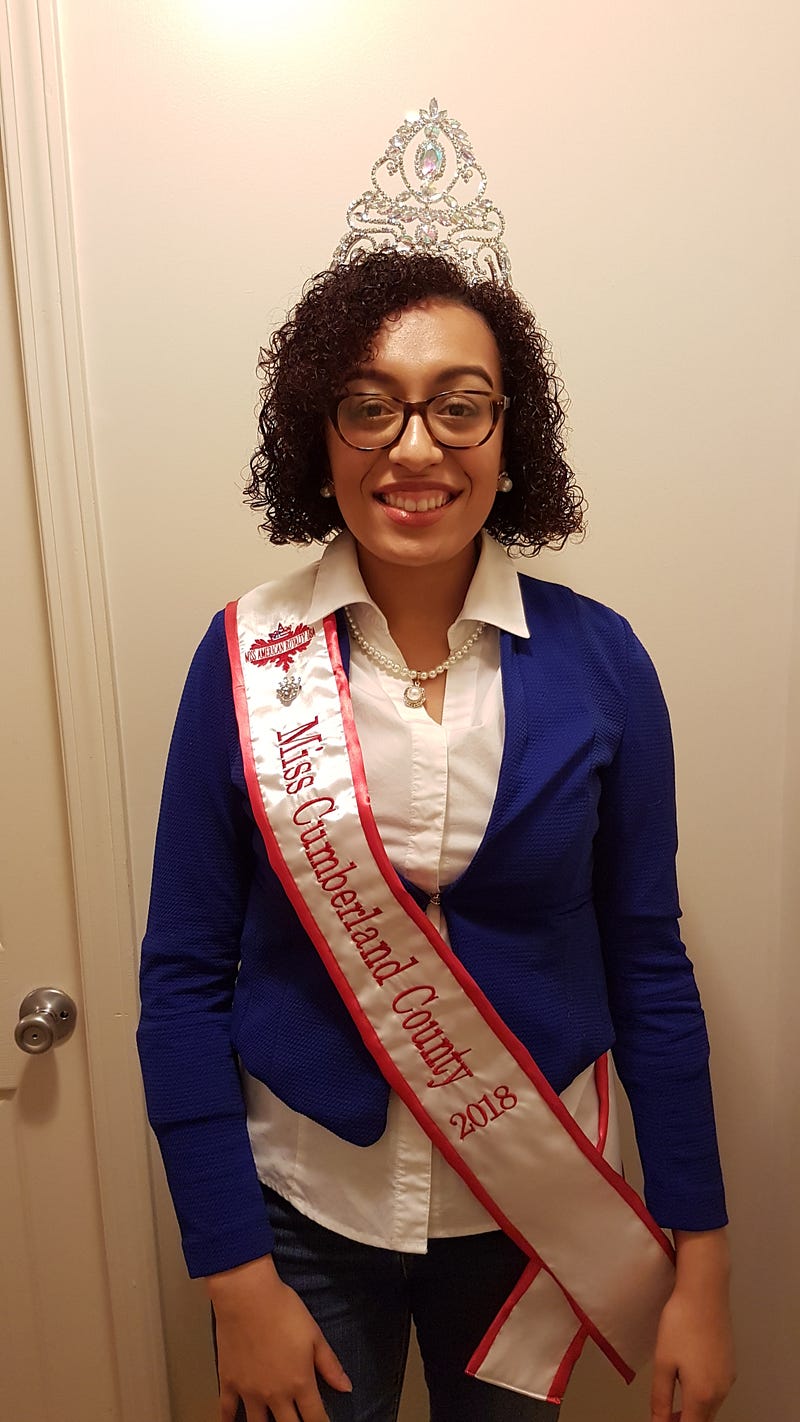
Where do you go to school?
- B.S. Biology, Fayetteville State University, Fayetteville, NC
- Union Pines High School, Cameron, NC
What do you do right now?
I am currently a senior biology major at Fayetteville State University and an FSU-RISE (Research Initiative for Scientific Enhancement) scholar. As a RISE scholar, I am required to have a research mentor and work in a research lab throughout the school year.
For my current research, I am working with aphids, which are common greenhouse pests that invade greenhouses and feed on the sap of many different plants causing leaves to curl, wilt or yellow and stunt plant growth. This is a serious problem for farmers because of crop damage and smaller crop yields. We have developed a Cannamix pesticide made from hemp seed found in the Cannabis plant and this pesticide has proven effective in our recent beetles and moths reproductive study. The question is “How does our Cannamix pesticide effect aphids and can it be used as a method of pest control?” We used different concentrations of Cannamix against a known pesticide called Chlorpyrifos (CPF) to determine its effectiveness.
For our toxicology test, we tested our Cannamix pesticide against a known pesticide called chlorpyrifos by dipping 1 gardenia leaf per concentration/ treatment and then placing 10 aphids per leaf dipped in concentration/ treatment. We used 1 rep per treatment with a control of DH2O and varied the concentrations of Cannamix and CPF dilutes, along with a small concentration of CPF. Our Cannamix hemp seed-based pesticide was developed by Fayetteville State University and is currently patent pending. We used Falcon ® Tissue culture petri dishes to place the leaves in and KIMTECH Science Kim Wipes to soak up any remaining liquid. Our exposures were 24 hours, 48 hours and 72 hours. Aphids were considered dead as not moving and responding to touching or movement.
To my surprise, I found out that it is not very effective against aphids, possibly due to aphids tolerance to insecticides which use similar properties found in hemp. But, no worries we may just need to change the formulation of our Cannamix to better affect the aphids.
What made you choose your STEM discipline in the first place?
In short, I had amazing biology teachers and they always told us to question everything. My high school science teacher, Ms. Barker, was definitely the one who pushed me into my goal of become a research scientist. In her classroom, we had a year-end project to pick a science topic and present it to a panel of judges. I decided to do mine in physics and recreate a hover board. I was successful in developing it and had a fun demonstration the day of my presentation. As I was the only one who developed a product, everyone was excited to try out my design.
My hover board could hover in place and hold a participant of up to 100 pounds. Sadly, I don’t have any pictures of it, but I can explain how it worked. It was made from plywood that was cut into a circular shape and then hole was cut in the center to allow for air to be pushed down into a rubber sheet that was connected to the plywood with tape and glue. Just like a air bag it would inflate and allow for levitation over smooth surfaces. I had such a great experience in Ms. Baker’s class and in creating my hover board, and that’s when I realized that becoming a scientist is the career for me. STEM just felt like the right path for me to let my curiosity run wild.
I decided to do mine in physics and recreate a hover board. My hover board could hover in place and hold a participant up to 100 pounds.
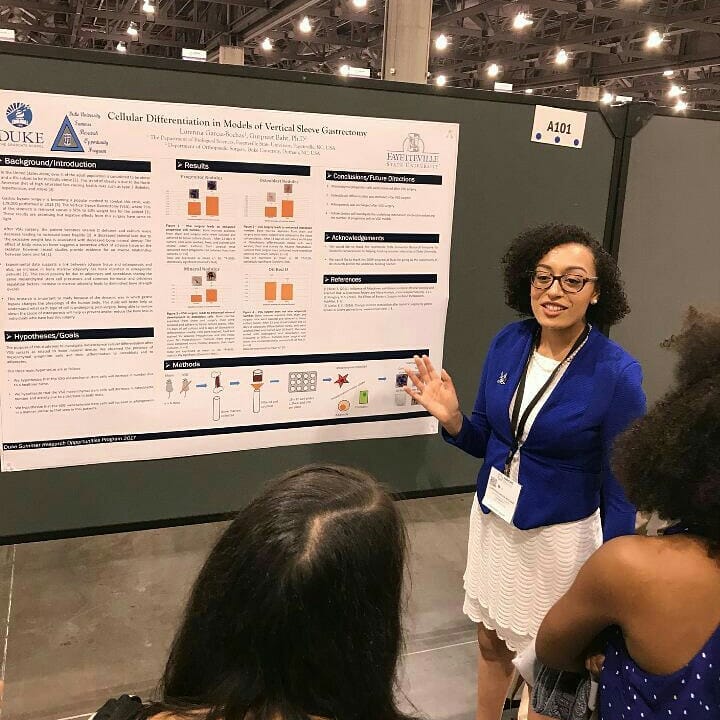
What’s one piece of advice you wish you had when you started your STEM journey?
I wish someone would have told me about the need for science communication, because sometimes I find it difficult to explain to people outside of STEM why what we do is important.
One time I was in class and I remember hearing a young man say he would never get a flu shot because he believed the government was out to get him. I thought he was crazy but I decided to try to explain that the flu constantly changes from year-to-year and so the vaccine is updated year-to-year to better protect our bodies in case of infection. He laughed and said that he doesn’t believe in science or in the doctors that push out the “harmful” medication. That experience made me wish there was a better way to educate the public on scientific studies and literature. This is a major reason why I am a science advocate and push for STEM education on all levels, even in adulthood.
Do you have any woman of color in STEM sheros? Who and why?
My high school science teacher, Ms. Barker! She definitely pushed me to pursue a career in STEM. The research project of building my hover board, that I did with her before I got to college made me truly believe that I had made the best choice for my major.
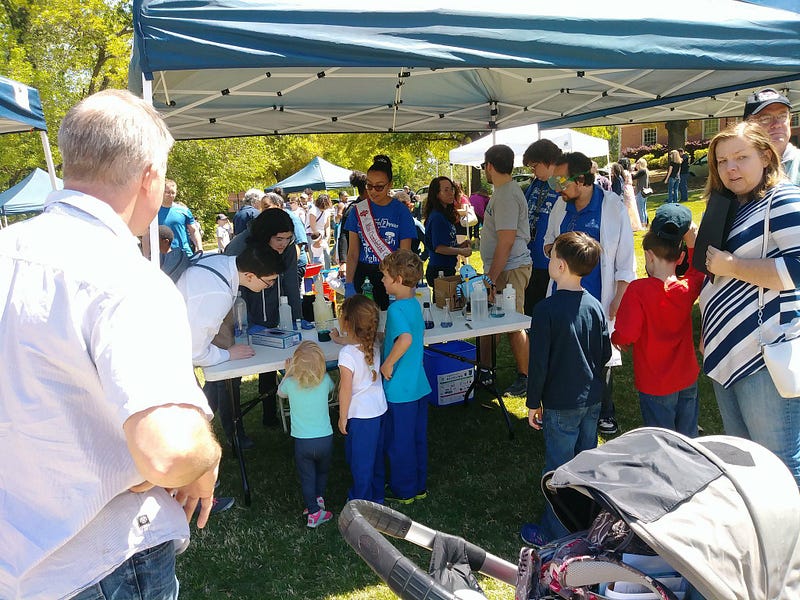
What else are you passionate about?
While I am quite busy with college, I have managed to make time to continue with my music career. I play tenor sax in the jazz band here at Fayetteville State. I am also a Miss American Royalty Cumberland County 2018 and my platforms are STEM education and women’s empowerment.
I am also the president of a local non-profit called Mommin’ Society, which helps mothers and soon-to-be mothers through their motherhood journey.
I am very happy being involved with so much because I used to be quite shy and never wanted to speak publicly or even in a small group. Now I am more outgoing and am determined to break out of my shell more everyday.
I’m also a member of Zeta Phi Beta Sorority, Inc. — Omega Beta chapter.
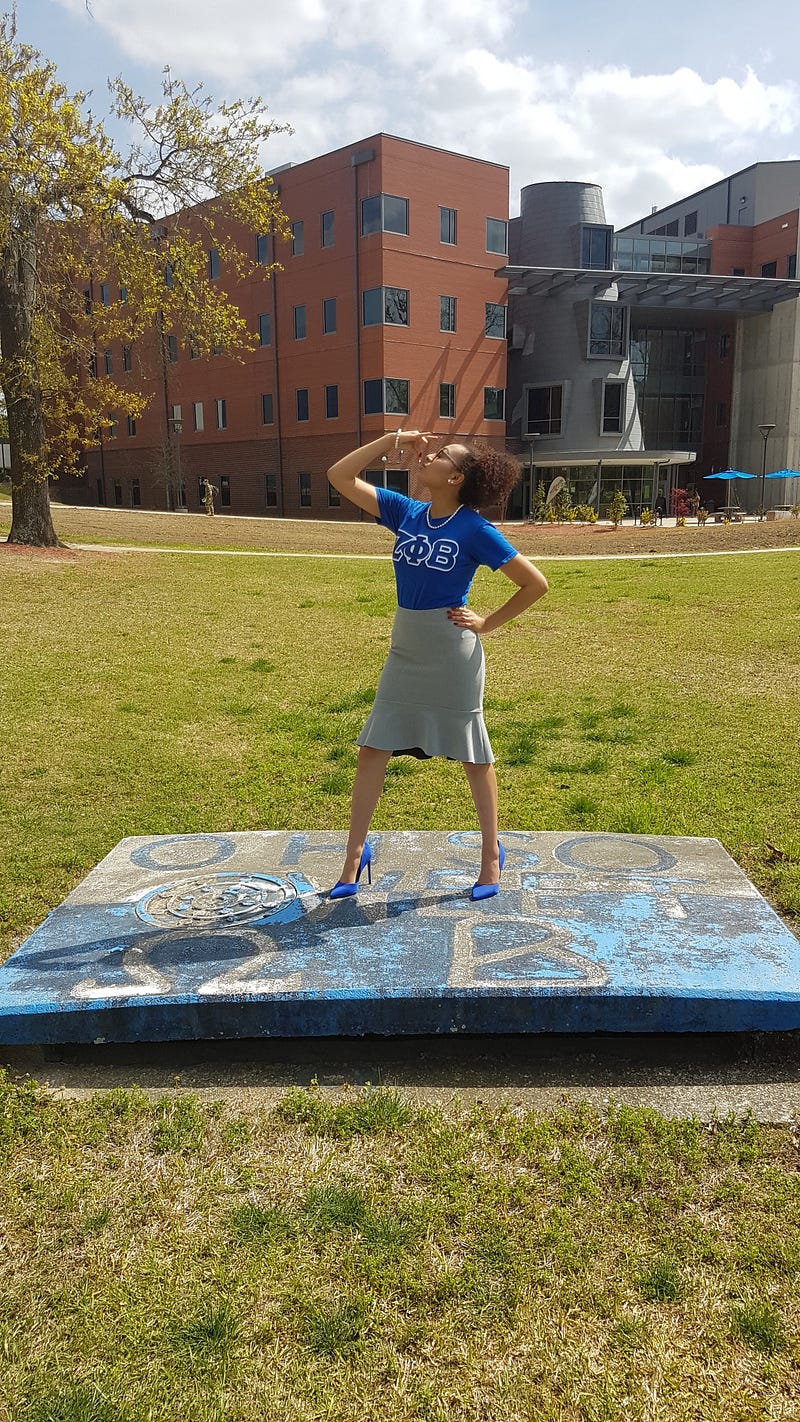
Why do you think it’s important to highlight women of color in STEM?
It’s important to highlight women of color in STEM because you really don’t see people who look like me in STEM.
If a young girl sees herself in me and says to herself, “if she can do it so can I”, I have done my job. I want all the children of the beautiful African diaspora to know that we are here and we will no longer hide.
Also, if we don’t support us no one else will. We need to stand up for one another and build with each other. Too often, I see women put each other down and throw each other under the bus. We need to talk to one another about how we can help each other grow and learn to not feel threatened but to feel joy when we see one another shine. [Editor’s note: This is precisely why #VanguardSTEM exists to make sure women of color in STEM shine!]
Are there institutions, groups or organizations you want us to mention in your feature?
My university, Fayetteville State University, especially student affairs. My program, FSU-RISE , The American Royalty pageant system and, of course, Mommin’ Society.
Are there other axes of identity that also impact your life/stem experience that you want to speak to (e.g. religion, sexual orientation, gender expression, ability status, neurodiversity, etc.)? How do these axes of identity impact you as a woman/girl/non-gender-conforming-person of color?
Well, I am a child of immigrants and have had to learn to love who I am. Growing up in Georgia, I didn’t see a lot of people who looked like me, especially with parents who were of different race and who were Latinx.
I had to learn to embrace my Blackness even when people said I wasn’t black enough and I had to learn to embrace my Latin heritage even when fellow Latinx told me I wasn’t Latin enough for them.
*Sigh* It was very difficult not feeling 100% accepted but when I went to Panamá for the first time to see my family, I immediately felt at home. Everyone looked like me and I didn’t feel as if I didn’t fit in. I fell in love with Panamá and honestly wished I could just stay and not go back. Even though I wasn’t 100% fluent, I didn’t feel as if my spanish wasn’t enough. My family was actually surprised I knew so much since I never 100% learned from my parents. I plan on being fluent before I turn 25 and going back to Panamá.
Being the first in my family to go to college as well as being a child of immigrants I have always felt like I had to prove more than everyone else. I never truly felt that I fit in due to my mixed race and heritage but as I learned to love who I was, my self esteem grew and my attitude changed.
I made my weakness of not fitting in into my strength of always standing out in the crowd.
You can find Lorenna on instagram and twitter.
Thank you to Lorenna for sharing your journey with us and letting the #VSVillage know that we can always be 100% ourselves no matter what. We can’t wait to hear more about your research and your time in Panamá!
If you enjoy our weekly #WCWinSTEM features, consider donating to our parent not-for-profit, The SeRCH Foundation, Inc., to help support this work.
